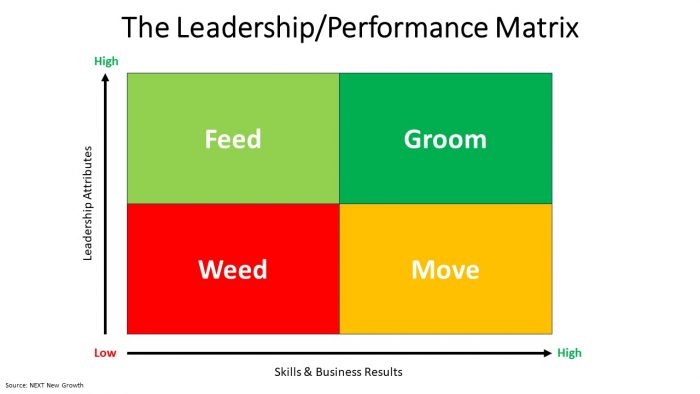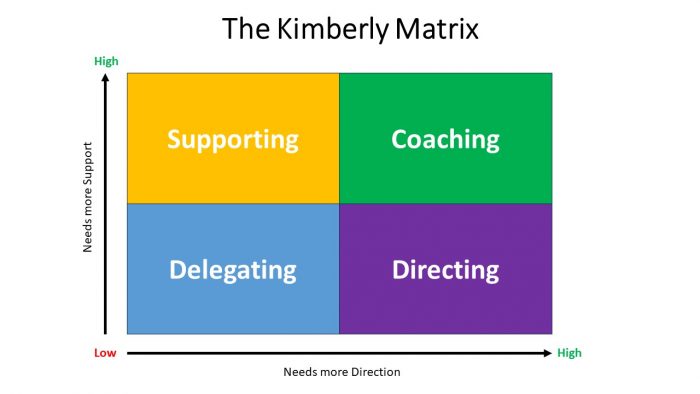
10 Feb TSLH #054: 2 Tools To Assess Your Team
Posted at 06:00h
in Newsletter
Read time: 6 minutes
Every leader who’s taking on a new team (myself included) struggles with this at one point or another: How to get a fairly accurate overview of your team members in terms of leadership abilities, performance, but also needs.
Typically, when starting as the leader of a new team, we tend to rely on some available information to make that assessment of our team:
- Past annual performance reviews
- Any previous 360 feedback assessment or other assessment
- Word of mouth from your boss or the departing leader
While these sources of information may provide some good information and feedback to you, I will also warn you of the risks to rely only on these: People will be biased and will communicate those biases to you without your being aware; you may get only part of a story; you won’t know for sure whether the team members got any opportunity to improve on any feedback.
Let me tell you a quick story that happened to me as I once took over a team. As I was prepping for day 1 with that team, I heard bad things about one of my soon-to-be direct reports: She was refusing change, she was harsh, she was not a team player, etc. It was to the point that when I started, this direct report – then a manager – had been demoted by my boss because of these perceived flaws. When I started with the team, I already had some bias against her but decided anyway to stay open and curious. It turns out that when I talked to her, I realized she was not against change at all, but rather wanted to warn people of the risks of going too fast in changing processes when the team was not ready. I also found out that she was indeed more than capable to manage a team; in fact she became one of my best managers on the team.
What I realized then is that I was missing critical tools to assess my teams, regardless of any feedback and noise I could get before starting with the team.
There are 2 tools I now use frequently and that you can use too to assess your team either as you start with them or at any time during your tenure, to see what actions you need to take.
The leadership/performance matrix. This matrix aims at sorting out your team members based on 2 attributes: The leadership they demonstrate and the skills and business results they have and create. This matrix is very relevant for all your direct reports, because you will want any direct report – especially if they’re themselves a manager – to demonstrate leadership skills and results. However, you should use it for your entire team, because it will help you identify who could be your next leaders for instance.

The first thing you’ll need to do is define the criteria that will help you put your team members on this matrix. For instance, you’ll need to identify the 3 or 4 key leadership attributes you consider important to have and based on your discussion with your team members, feedback from others, you can decide if a particular team member’s leadership attributes are high or low. Do the same with the skills and business results, for instance by defining 3 or 4 standards of expected performance and skills that are necessary in a role.
Once, you have put all your team members on the matrix, you have 4 types of actions to consider:
- Low leadership/low skills & results – Weed: These people are your low performers. Here are things you can do:
- Put them on a Performance Improvement Plan. I am always for giving a second chance to everyone, especially because I believe that no-one willfully comes to the office with the intent to do a bad job. More often than not, bad performance is linked to not having the right resources or support to do a job. Be careful though not to spend too much time and resources on low performers. After all, you only have 90 days to make your mark.
- Have a discussion with them to see if they would not fit better in another role, either on your team (again be careful about your time constraint) or with another team where they might thrive more.
- Let the person go. This is usually the best outcome both for the person and for you as the leader. It helps establish your standards of performance and at the same time allows you to focus on what is important: The people who do perform.
- Low leadership/high skills & results – Move: These people are often high performing people in individual contributor roles or new managers who have not been trained on leadership attributes. These people could possibly be your next generation of leaders if they are developed properly. Here are possible actions you can take:
- Get them into leadership development programs (if they are interested).
- Encourage participation in challenging projects where their expertise will be sought.
- Empower them to take on more responsibilities, for instance mentoring newer team members, taking over a task from their managers, etc.
- Involve them in discussions and seek their inputs on decision-making.
- High leadership/low skills & results – Feed: These people often demonstrate leadership skills (they are proactive, offer solutions when problems arise) even without a manager title and they may have reached their ceiling as far as current skills is concerned, which may result in lower than expected results. These people need to be further fueled with resources so they continue to learn and develop their skills. Possible actions here are:
- Training programs to help a person develop new skills or improve existing ones, in order to augment impact on results.
- Delegate tasks and activities so the person learns new things that they can then re-use in their job to have a bigger impact.
- Mentor the person to teach them how to reach the expectations in what results must be delivered.
- High leadership/high skills & results – Groom: These are usually the high performers on your team. If they are not yet in a leadership position, you should definitely look for opportunities to get them here (provided they’d like such a role!) Here are actions you can take:
- Include them in more strategic decisions to give them more challenging opportunities to deliver results.
- Seek advice and counsel from them.
- Delegate complex tasks and activities to continue growing them.
- Consider them for a promotion in your team or investigate whether they could be an even better leader on another team.
In all 4 situations, I also strongly recommend to use a combination of coaching and mentoring to support your team members. Again, make sure you don’t waste too much time on your low performers, as this could derail your own performance at some point.
The Kimberly Matrix. If you googled it, I bet you did not find anything, and that’s normal. I named this matrix after one of my mentors who taught me to look at the people on my team using 2 dimensions: The level of direction a person needs (explanation of what their role is, what the expectations or standards of performance are, what to do, how to do it, etc.) and the level of support a person needs (how you engage in a dialog with the person, coaching them, listening and providing guidance for improvement). If you ask me, this matrix is actually closely related to the situational leadership model.

This matrix is a great tool to use when you want to assess where a team member is in their journey to performance in their role and how you can help them, by adopting what style.
- A new team member will usually starts in the lower right quadrant. They will need a lot of direction but usually a low level of support. The high level of direction comes from the fact that the new team member may be just out of school and need to be taught what to do and how to do the job, or they just need to learn the job, the tools and processes used in the company, etc.
- After a while, this person, while still requiring some direction, will start needing support, in the form of mentoring, coaching, helping the person understand why their job is important and how it contributes to the team and organization success. Coaching at this point is critical, because it helps the person elevate their game, allowing them to be more autonomous for instance.
- At some point, the person will require much less direction but will still need a high level of support. Here, the leader must support the person with nurturing the expertise by coaching them even more, creating alignment between what the leader now expects from the person and what the person wants/can do. This step is usually the step where you will see people shift. Either someone will go over the tipping point and slowly evolve to the last quadrant, or they will stay in this third quadrant, and sometimes even go back to earlier quadrant. If the latter happens, this is where you need to be careful about performance as this could signal a challenge with a person.
- Finally, a person will get in the quadrant where they need neither a high level of direction nor a high level of support. At this stage, the person is very comfortable in their job, they can be trusted, they are delivering the expected results and this is a good time to prepare them for their next role by delegating tasks and activities to them, assigning them to complex projects, etc.
Now, there are tens of other tools you could use to assess your team. These two are easy to implement and use. Keep in mind though that these tools just give you an assessment at a specific time. It is therefore a good habit to repeat the exercise at regular intervals (like every 6 months or every year). Also, be careful that the “results” you get by using these tools may be strongly skewed by your own perceptions, by what you heard about people when you joined as the leader of the team, and by other factors. This is why I alway strongly recommend to start these exercises by clearly defining some precise metrics that are important for each dimension you want to rate. This way, you will prevent intuition, emotion, perception from happening and you will instead rely on more solid measurements to place your team members on these matrix.
I wish you a great read. I’ll see you next Saturday!
TL; DR (Too Long, Did not Read)
2 tools to assess your team
- The leadership/performance matrix.
- The Kimberly matrix.
Whenever you’re ready, there are 3 ways I can help you:
1️⃣ Work 1-1 with me to step up as the authentic leader you aspire to be.
2️⃣ Hire me to help you build a high-performing team.
3️⃣ Start with my affordable digital courses on Mastering Difficult Conversations for Leaders and Goal Setting


